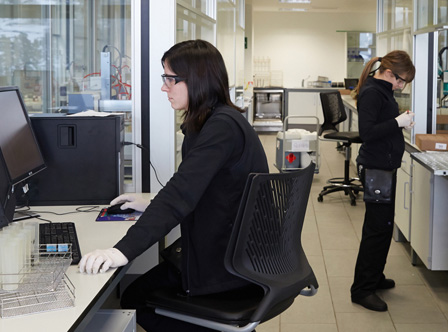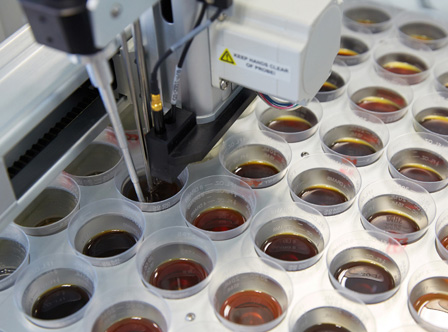THE EXPERT'S VIEW



The development of high-performance lubricants means that companies are consuming increasingly smaller quantities. What is more, these lubricants can be used in a greater variety of applications, in other words, there are fewer and types of lubricants. And finally, they have to be suitable for use in any type of machinery. This has led to a fall in the demand for specific lubricants and a change in the behaviour of consumers, who are demanding longer oil change intervals and at a lower cost.
At the same time, the globalisation of the market, customers and suppliers has also brought with it globalisation of the development of technologies. This has unleashed a change in the lubricant industry.
One consequence of this is the increase in competitiveness and most of the customers concentrating on just a handful of suppliers. Oil companies have had to merge to be more competitive, and that is why we have seen the creating of large conglomerates like Shell-Penzoil, BP-Castrol, Exxon-Mobil and Texaco-Chevron-Amoco.
The biggest lubricant markets are the USA, Russia, China, Japan, Germany and India. It is curious to see that three of the six countries with the biggest market in lubricants are Asian countries. It is important to bear in mind that accessibility to the markets of Eastern and Central Europe as well as to those of Asia and Latin America has increased in recent years; their markets have been liberalised, so "new markets” have opened up with 98% of world market accessibility.
If one looks at the product segments, 61% of the world lubricant market is cornered by the market for automotive lubricants, in which nearly 63% is geared towards commercial vehicles and stationary equipment. For example, the van and passenger vehicle segment accounts for 37%.
If instead of considering the product type, one bears in mind the significance of the market segment, one can see that 25% can be regarded as high value, 65% as medium value and 10% as low value.
The lubricant market is relatively fragmented. In Western Europe there are about 300 manufacturers, bearing in mind that worldwide there are 1,700, of which 1,500 are independent companies and 200 form part of large national and international companies. However, the manufacturers vary tremendously in size: 2% of the manufacturers of finished lubricants account for over 60% of the market volume, while 93% of the manufacturers have 21% of the world market.
Today, the main lubricant manufacturers are: Shell, Exxo-Mobil, Sinopec, BP-Castrol, Texaco-Chevron, Lukoil, Valvoline, Mishubishi Oil-Nippon Oil, Total-Fina-ELF, Fuchs, Sun, Idemitsu, Indian Oil, and Agip.
It is reckoned that the 1,700 manufacturers of lubricants existing worldwide have 3,000 blending and packing plants, as well as 500 grease plants with an operating percentage at around 60-70%. In Western Europe there are 381 blending and packing factories and 94 grease factories.
What is more, one has to bear in mind that most of the small companies disappear over time, 70% of the cases in the first generation (20 years), 90% in the second, and 95% in the third. That is why it would come as no surprise if the 1,700 lubricant manufacturers that existed in 1998 were to be reduced to about 1,000 by 2020.
Niche markets
In Germany, Italy, and Spain as well as in the USA and Canada, most independent lubricant manufacturers have geared their business towards niche markets, which seems reasonable. They have specialised in cutting fluids, corrosion protectors, lubricating greases or high-performance lubricants. And in some cases, they have become sub-contractors or suppliers for other markets.
In England, Benelux, France, Switzerland and Greece, the situation is somewhat different, since the medium and small companies continue to be geared towards automotive lubricants and the full range of products. In Japan, the small companies have opted for the niche strategy and have specialised in cutting fluids and lubricating greases, in particular.
In Western Europe, the future may have to look towards specialisation and niche strategies like biolubricants, towards subcontracting or supplying in order to access larger markets, or towards development or merger strategies.
In our view, all the small independent companies that are geared towards one sector or towards the whole range of products will have to work only locally or will even disappear.
Environment
One of the trends in the lubricant market is the use of new formulations in which the best possible bases and additive technology with environmental benefits are used. From the point of view of environmental impact, one of the most important emissions that must be minimized is CO2.
In this field, moreover, the market is exploring the use of low-impact, biodegradable oils with a plant or synthetic base as opposed to the formulation of environmentally more negative mineral oils. Furthermore, research is being carried out to cut the level of aromatic compounds owing to their link with skin cancer and the use of additives that lead to lower values of oxygen demand that is needed to degrade them.
The environmental challenge is one of the main fields of growth for the lubricant market, and this is prompting a whole host of lines of research. They include the cutting of the use of sodium nitrate as a corrosion inhibitor, the elimination of the use of heavy metals in the formulations, the more rationalised use of biocides or the cut in the use of water-miscible lubricants.
The amount of lubricant that is used in industry remains high, however. At the end of their useful service life, fluids of this type are regarded as hazardous and therefore not very environmentally friendly. To be able to fulfil the basic functions carried out by the these fluids and to do our duty with respect to the general public that is becoming increasingly concerned about the environment, the future lies in three strategies designed to cut the impact of these fluids: Prevention, Minimisation and Recovery.



